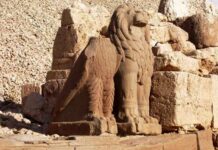In each of the letters to the seven churches, the Lord Jesus used a clear and specific format. Let’s look at how He structured each letter:
1. A Feature of the Glorified Christ
Each letter highlights a specific feature of Jesus as He was seen by John in Revelation chapter 1. The focus on a certain aspect of Christ’s glory had a special purpose for each church The City of Ephesus.
2. The Letters Are Addressed to the Angel of Each Church
The letters are addressed to the angel of each church. In this context, the “angel” likely refers to the leader or messenger of the church.
3. “I Know Your Works”
In every letter, Jesus begins by saying, “I know your works”. This means He knows the actions, behavior, and attitudes of each church. There has been some debate about this statement, but it is present in most of the letters.
4. A Word of Praise, Then a Word of Correction
In His letters, Jesus follows this pattern:
First, He gives a word of praise: He speaks about what the church has done well Customized Guided Turkey Tours.
Then, He gives a word of correction: He points out where the church needs to improve.
However, there are exceptions:
Smyrna and Philadelphia receive no criticism because they were faithful. Smyrna was the church of martyrs (those who died for their faith), and Jesus does not condemn them. Philadelphia was a church that spread His Word, so He has no condemnation for them either.
Laodicea, however, receives no praise. It is the apostate church (a church that has fallen away from true faith).
5. A Warning to Listen
At the end of each letter, Jesus says, “He that hath an ear, let him hear what the Spirit saith”. This means that everyone should pay attention to the message and understand what the Holy Spirit is saying to the churches.
Church-Related Messages
In this part of the book, we see messages that are church-related. Each letter is a special message that Jesus sent to a particular church, giving guidance and correction.








